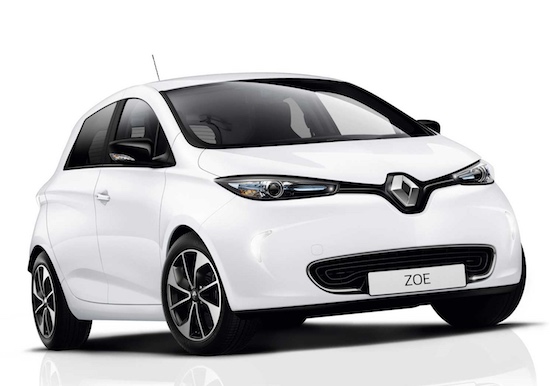Australians are limited for choice when it comes to buying small size EVs, but that choice is now opening up just a little more with the announcement by French automaker Renault that private buyers can now get their hands on an electric Renault Zoe hatchback.
Late last year, Renault announced the introduction of their all-electric hatchback, the Zoe, to Australia, but unfortunately they were keeping this limited to commercial and government fleets.
They did hint at the time that determined buyers might be able to convince them to sell on a case-by-case basis, and it seems there was so much interest that Renault have now done an about-turn.
Starting today, individuals wanting to zip around in a French-made electric hatchback can do so, buying from one of Renault’s EV dealerships for a price (before dealer costs) of $47,490 for the Zoe Life and $49,940 for the Zoe Intens.
While sales have been ow in Australia, the Zoe has been the best selling EV of its type in Europe and won the Best Green Car award at the FirstCar Awards 2018 earlier this year.
Andrew Moore, managing director a Renault Australia, said the company had taken a measured approach to the roll-out of electric vehicles locally, in line with customer demand in Australia.
“Our initial roll-out was to focus our discussions directly with forward-thinking fleets who want to incorporate an electric vehicle into their existing fleet of vehicles,” he said.
Moore says that fleet sales have already exceeded expectation, although only 27 electric Zoes have been sold to fleets in Australia for the first quarter of 2018 (plus two at the end of last year).
“Since commencing sales to fleets in late 2017, we’ve seen demand from a passionate group of customers who would like the opportunity to purchase a Renault electric vehicle and we’re thrilled to now be able to offer this,” Moore says.
Australian individuals will be able to choose from the Zoe Life or the Zoe Intens, and specs for each model differ only slightly, with both featuring a 7” R-LINK navigation touchscreen, while the Intens also sports rear parking sensors and 16” ‘Black Shadow” alloys.
Both are kitted out with a 41Kwh lithium-ion battery, and a range of about 300kms. They take 2 hour 40 minutes to charge on 22kW three phase, according to the company’s website.
“To charge either Zoe model, the purchaser will also need to invest in a wall charger, “for under $2500 for the charging station fully installed in normal circumstances for a home,” says director of JET Charge Tim Washington.
The Renault Zoe and Intense will be available through dealerships in Sydney, Melbourne, Adelaide and Perth, with additional dealerships opening in Melbourne and Sydney in the not-too-distant future.
Moore says that more Renault EV specialists will also open in Brisbane, Canberra and Hobart in Renault’s next phase rollout.
“Along with demand from customers, we’ve experienced positive interest from within our dealer network of existing Renault dealers who wish to expand their product offering and become Renault electric vehicle specialists.
“They’ve recognised the opportunity that electric vehicles can bring to their local area and they’ve made the investment in their dealership to become Z.E. ready,” he says.
Worldwide, 1 in 5 EVs sold is an Renault – in fact the Zoe was Europe’s most popular EV in 2017 – so it will be interesting to see if giving the Renault Zoe a headstart in the Australian market will see it take hold in Australia before the Nissan Leaf and Kia Niro hit our shores next year.
Moore says that the introduction of the Renault Zoe to Australian shores is just the start.
“As part of Renault’s Drive the Future 2022 plan announced in October 2017, Groupe Renault committed to having 8 pure electric and 12 electrified models as part of the range. From an Australia point of view, we’ve now taken the next fundamental step in realising this vision.”








